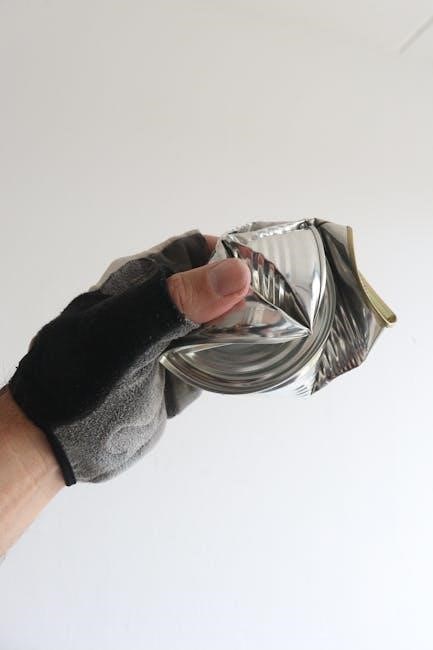Crossdressing involves wearing clothing traditionally associated with a different gender, often for self-expression or personal fulfillment. It’s a diverse practice, varying widely in motivation and style.
1.1. Definition and Overview
Crossdressing refers to the act of wearing clothing and accessories traditionally associated with a different gender. It is a form of self-expression that varies widely among individuals, with some engaging in it for personal fulfillment, others for exploration of gender identity, and others for artistic or theatrical purposes. While often practiced by men wearing feminine attire, it is not limited to any gender. Crossdressing is distinct from being transgender, as it does not necessarily imply a desire to transition genders. The practice is deeply personal and can serve as a means to explore one’s identity, build confidence, or simply experience life from a different perspective.
1.2. Understanding the Lifestyle
Crossdressing is a deeply personal and varied lifestyle that involves wearing clothing traditionally associated with a different gender. For many, it is a form of self-expression and identity exploration, while for others, it may serve as a means to cope with societal expectations or personal anxieties. The lifestyle can be practiced privately or publicly, depending on individual comfort levels. Motivations vary widely, ranging from emotional fulfillment to artistic expression. Crossdressing is not inherently tied to sexual gratification, though it can be for some. It often fosters a sense of community among practitioners, who share experiences, tips, and support. This lifestyle encourages self-acceptance and confidence, helping individuals align their inner identity with their outward presentation.

History of Crossdressing
Crossdressing has a rich, diverse history, with roots in ancient cultures, theater, and societal norms. It has evolved over centuries, reflecting changing gender roles and acceptance levels.
2.1. Historical Context
Crossdressing has deep roots in ancient cultures, with evidence of gender-blurring practices in religious rituals, theater, and social norms. In many societies, such as ancient Greece and Rome, crossdressing was common in theatrical performances. Shakespearean theater famously featured male actors playing female roles, highlighting societal comfort with gender fluidity. In the 18th century, European societies saw crossdressing as a form of rebellion or disguise. Historical records also show crossdressing in Indigenous cultures for spiritual purposes. Over time, societal norms shifted, leading to increased stigma, but modern times have reintroduced crossdressing as a form of self-expression and identity exploration, challenging traditional gender boundaries.
2.2. Evolution Over Time
Crossdressing has evolved significantly over centuries, reflecting changing societal norms and cultural values. In the 19th and early 20th centuries, it was often stigmatized and hidden, with individuals facing societal backlash. The mid-20th century saw subtle shifts, with crossdressing becoming more visible in subcultures. The 1960s and 1970s civil rights movements, including LGBTQ+ activism, began to challenge traditional gender norms. By the 1990s and 2000s, the internet enabled global communities to form, fostering greater acceptance and visibility. Today, crossdressing is increasingly recognized as a form of self-expression, with growing societal inclusivity and a broader understanding of gender fluidity and identity.

Psychology of Crossdressing
Crossdressing often relates to identity, emotional satisfaction, and self-expression. It can provide a sense of fulfillment and comfort, influenced by personal experiences and psychological needs.
3.1. Motivations and Reasons
Motivations for crossdressing vary widely, often rooted in personal identity, emotional satisfaction, or self-expression. Some individuals find fulfillment in exploring gender roles, while others seek comfort in escaping societal expectations. For many, it’s a way to align their outward appearance with their inner sense of self. Emotional comfort, confidence, and creativity are common driving factors. These reasons are deeply personal and can differ significantly from one person to another, highlighting the diversity of experiences within the crossdressing community. Understanding these motivations is key to grasping the complexities of this practice and its significance in personal journeys of self-discovery and empowerment.
3.2. Mental Health Considerations
Crossdressing can have both positive and challenging implications for mental health. For many, it provides emotional relief, reduces stress, and fosters self-acceptance. It can act as a coping mechanism, helping individuals align their inner identity with their outward expression. However, societal stigma and discrimination may lead to anxiety or depression for some. A supportive environment and positive self-perception are crucial for mental well-being. Access to mental health resources and understanding communities can significantly improve emotional resilience. Additionally, the brain’s release of feel-good neurotransmitters during crossdressing highlights its potential to enhance mental health. Balancing personal fulfillment with societal pressures is essential for maintaining emotional stability.

Social and Cultural Aspects
Societal perceptions of crossdressing vary widely, influenced by cultural norms and traditions. Acceptance differs globally, with some cultures embracing gender fluidity while others view it with skepticism.
4.1. Societal Attitudes
Societal attitudes toward crossdressing vary significantly across cultures and communities. In some societies, crossdressing is embraced as a form of self-expression and gender exploration, while in others, it is met with disapproval or even discrimination. Stigma and misunderstanding often stem from traditional gender norms, which can make crossdressers feel marginalized. However, growing awareness and advocacy for gender diversity have led to increased acceptance in many places. Educational efforts and media representation play a crucial role in shaping public perception and fostering inclusivity. Despite progress, many crossdressers still face challenges in gaining societal acceptance, highlighting the need for ongoing dialogue and understanding.
4.2. Cultural Differences
Cultural differences significantly influence how crossdressing is perceived and practiced worldwide. In some cultures, such as in India with the Hijra community or Thailand with Kathoey, crossdressing is deeply rooted in tradition and is often accepted as part of societal norms. Conversely, in cultures with rigid gender roles, crossdressing may be met with strict disapproval or even legal consequences. Religious and societal norms play a major role in shaping these attitudes. While some cultures embrace gender fluidity, others enforce strict adherence to traditional gender expressions. These differences highlight the importance of understanding local contexts when exploring crossdressing practices globally.

How to Start Crossdressing
Starting crossdressing involves researching styles, experimenting with clothing, and building confidence. Begin with basics like undergarments and gradually explore makeup and accessories to express your identity.
5.1. Initial Steps and Tips
Starting your crossdressing journey begins with self-reflection and understanding your motivations. Begin by experimenting with clothing items that resonate with your identity, such as undergarments or accessories. Set boundaries for your comfort and explore gradually. Seek inspiration from online communities or mentors for guidance. Practice makeup and grooming techniques in private to build confidence. Consider starting with affordable, versatile pieces to build your wardrobe. Privacy and safety are crucial, so choose environments where you feel secure; Embrace patience and allow yourself time to grow into your expression. Connecting with supportive groups or forums can provide valuable resources and encouragement.
5.2. Building a Wardrobe
Building a crossdressing wardrobe begins with essential items like undergarments, shoes, and clothing that align with your desired presentation. Start with basics such as bras, stockings, and gender-affirming garments. Experiment with different styles to discover what suits you best. Consider versatile pieces that can be mixed-and-matched for various looks. Accessories like wigs, jewelry, and belts can enhance your overall appearance. Tailor clothing to fit your body for a polished look. Gradually expand your collection by exploring fabrics, colors, and themes. Don’t forget to prioritize comfort and confidence in your choices. Over time, your wardrobe will reflect your unique identity and personal style.

Legal and Ethical Considerations
Understand the legal implications and ethical considerations of crossdressing, ensuring privacy and respect for societal norms, while being aware of local laws and ethical responsibilities.
6.1. Legal Implications
Crossdressing itself is generally legal, but legal implications may arise depending on the context. In many regions, wearing clothing associated with a different gender is protected as a form of self-expression. However, issues may emerge in workplaces with strict dress codes or in public spaces where decency laws apply. Privacy rights and anti-discrimination laws often protect crossdressers, but awareness of local regulations is essential. Legal challenges may also arise if crossdressing is perceived as disruptive or inappropriate in certain settings. Understanding these nuances ensures compliance and avoids potential legal conflicts, while respecting individual rights to expression.
6.2. Ethical Dilemmas
Crossdressing raises ethical considerations, particularly regarding honesty and consent in relationships. Some individuals may struggle with disclosing their crossdressing to partners, fearing judgment or rejection. Societal norms often impose expectations about gender expression, creating ethical dilemmas for those who wish to remain authentic. Balancing personal freedom with respect for others’ boundaries is crucial. Ethical behavior involves being truthful about one’s identity while respecting the feelings and beliefs of those around them. Navigating these challenges requires empathy, self-awareness, and a commitment to mutual understanding. Ultimately, ethical crossdressing emphasizes harmony between personal expression and the well-being of others involved.

Health and Safety
Crossdressing requires attention to physical and mental well-being. Ensure clothing fits properly to avoid discomfort or health issues. Prioritize hygiene and safety practices to maintain overall health.
7.1. Physical Health Tips
Crossdressing can impact physical health if not approached mindfully. Choose breathable fabrics to prevent skin irritation and ensure clothing fits properly to avoid restricted movement or circulation issues. Avoid tight garments that may cause discomfort or long-term harm. Practice good hygiene, especially with wigs, makeup, and shared items. Remove makeup thoroughly to prevent skin problems. Consider the weight and material of shoes, as they can affect posture and foot health. Take regular breaks from restrictive clothing to allow your body to relax. Consult professionals for tailored advice on maintaining physical well-being while crossdressing.
7.2. Safety Measures
Ensuring personal safety is crucial while crossdressing. Always assess your environment for potential risks and avoid areas where you feel unsafe. Keep your crossdressing private if necessary, using secure storage for items. Be mindful of surroundings, especially in public spaces, to avoid unwanted attention. Consider sharing your plans with a trusted ally for emergencies. Carry emergency contacts and stay informed about local laws or social norms. Discretion is key in unfamiliar settings, and using pseudonyms can protect your identity. Avoid sharing personal details with strangers online or in public. Prioritize your well-being by staying vigilant and prepared.

Fashion and Beauty Tips
Crossdressers should focus on outfits that flatter their figure, ensuring proper fit and proportion. Accessories like wigs, heels, and jewelry can enhance femininity. Makeup tips include contouring for defined features and choosing colors that complement skin tones. Blending is key for a natural look. Confidence completes any ensemble, making it essential to own the style chosen.
8.1. Clothing Choices
Clothing choices are a cornerstone of crossdressing, allowing individuals to express their gender identity or personal style. Start with basics like well-fitted tops and pants that create a flattering silhouette. Dresses and skirts can add elegance, while tailored suits offer sophistication. Consider the fabric, color, and texture to suit the occasion. Layering clothes can enhance shape and versatility. Accessories like belts, scarves, and jewelry can transform an outfit. Heels or flats can change posture and confidence. Prioritize comfort and authenticity, ensuring the clothes reflect the wearer’s true self. Experimenting with styles helps discover what feels most empowering and aligned with personal expression.
8.2. Makeup and Grooming
Makeup and grooming are essential tools for crossdressers to enhance their appearance and confidence. Start with a smooth base using foundation that matches your skin tone. Concealer can hide blemishes, while blush adds a natural glow. Eyeshadow, eyeliner, and mascara help define the eyes, creating a polished look. Lipstick or lip gloss completes the transformation, drawing attention to the face. Grooming is equally important: shave or trim facial hair, and style your hair to complement your outfit. Practice techniques online or through tutorials to master your look. Remember, makeup and grooming are personal journeys, allowing you to express your authentic self confidently.

Personal Stories and Experiences
Crossdressers share diverse journeys of self-discovery, empowerment, and challenges. Their stories often highlight personal growth, societal reactions, and the transformative power of embracing one’s true identity.
9.1. Inspirational Journeys
Crossdressers often share deeply personal and uplifting stories of self-discovery. Many recount feeling a sense of wholeness when embracing their true selves. One individual described finding a “missing part” of themselves through crossdressing, emphasizing its transformative power. Others highlight empowerment, overcoming societal norms, and gaining confidence. These journeys are not just about clothing but about aligning their outward appearance with their inner identity. The stories showcase resilience, as many navigate challenges while staying true to themselves. Such experiences inspire others, proving that crossdressing can be a powerful tool for personal growth and authenticity. These narratives remind us of the importance of self-acceptance.
9.2. Lessons Learned
Many crossdressers emphasize the importance of self-awareness and patience. Understanding personal motivations and boundaries is crucial, as crossdressing can evoke strong emotions. Embracing the journey without rushing is key. Building a support system, whether online or in-person, helps navigate challenges. Learning to handle criticism gracefully and staying true to oneself is vital. Authenticity and confidence grow over time, fostering empowerment. These lessons highlight personal growth, resilience, and the value of community. They remind us that crossdressing is not just about clothing but about embracing one’s true self with courage and determination. These insights inspire others to embark on their own journeys of self-discovery and acceptance.

Resources and Support
Online communities, forums, and support groups provide guidance and advice for crossdressers. Professional help from therapists or counselors can also offer personalized support and understanding. These resources foster connection and empowerment.
10.1. Communities and Forums
Online communities and forums are vital for crossdressers seeking support and connection. Platforms like Reddit, Facebook groups, and specialized forums offer safe spaces to share experiences, ask questions, and gain advice. These communities often include individuals with similar interests and challenges, fostering a sense of belonging. Many forums are moderated to ensure respectful and inclusive discussions. They provide resources for finding local meetups, advice on transitioning, and tips for navigating societal expectations. Engaging with these communities can help reduce feelings of isolation and empower individuals to embrace their identity confidently. They are invaluable for building networks and accessing shared knowledge and experiences.
10.2. Professional Help
Seeking professional help can be a crucial step for crossdressers navigating their identity or facing challenges. Therapists, counselors, and psychologists specializing in gender identity can provide guidance and support. They help individuals explore their feelings, address mental health concerns, and develop coping strategies. Professional help can also assist in understanding motivations and emotions associated with crossdressing. Support groups led by professionals offer a structured environment for sharing experiences and gaining insights. Additionally, medical professionals can provide advice on hormone therapy or other transition-related topics. Confidentiality and nonjudgmental support are key benefits of engaging with professionals, aiding personal growth and self-acceptance.
Crossdressing is an empowering journey of self-discovery and authenticity, allowing individuals to embrace their true selves with confidence and grace.
11.1. Final Thoughts
Crossdressing is a journey of self-discovery and empowerment, allowing individuals to embrace their true selves. It’s important to approach this journey with courage, patience, and self-compassion. Remember, crossdressing is a personal choice and means something different to everyone. Whether it’s for expression, comfort, or exploration, it’s a valid way to connect with your identity. Surround yourself with supportive communities and resources to help you navigate this path. Embrace the freedom to be yourself, and don’t let societal expectations define your journey. Crossdressing is a celebration of diversity and individuality, and it’s okay to take it one step at a time.
11.2. Encouragement and Empowerment
Embracing crossdressing is a powerful act of self-love and empowerment. Remember, your journey is unique, and there’s no right or wrong way to express yourself. Celebrate your courage in exploring your identity and don’t let societal norms dictate your choices. Surround yourself with supportive communities and resources that uplift you. Every step, no matter how small, is a victory. Allow yourself to grow and evolve without pressure. Crossdressing is a celebration of individuality, and your authenticity is your greatest strength. Keep shining, and know you’re part of a vibrant community that values freedom and self-expression.






























